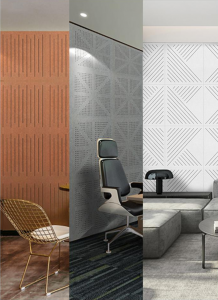As we go about our daily lives, we are constantly bombarded with noise from various sources such as traffic, construction, and even our own neighbors. This constant exposure to noise pollution can have a negative impact on our mental and physical health, making it difficult to relax and concentrate in our own homes.

The good news is that soundproofing your room can significantly reduce the amount of noise entering your space, creating a more peaceful and quiet environment. In this article, we will provide you with tips and tricks for effective soundproofing so you can enjoy a more tranquil and stress-free living space.
Assessing Your Room for Soundproofing
Before you start soundproofing your room, it is important to assess the existing noise levels and identify potential weak points for sound leakage. This will help you determine which soundproofing techniques will be most effective for your specific space.
One way to assess your room is to create a checklist and go through each element of the room, such as walls, windows, doors, and floors, to identify areas where sound may be entering or escaping. Look for any gaps or cracks that could be potential sources of noise leakage.
Additionally, the layout and furniture placement in your room can also affect soundproofing. For example, large pieces of furniture can act as sound barriers while open spaces can allow sound to travel more freely. Consider rearranging furniture or adding strategic sound barriers to improve soundproofing.
Remember, accurately assessing your room is crucial for effective soundproofing. Take the time to thoroughly evaluate your space before implementing any soundproofing solutions.
Soundproofing Techniques for Walls
When it comes to soundproofing a room, the walls are often the first area to focus on. This is because sound can easily penetrate through walls, especially if they are thin or poorly insulated. In this section, we will discuss some effective techniques for soundproofing walls, so you can enjoy a quieter and more peaceful space.
1. Add Mass
One of the most effective ways to soundproof walls is by adding mass. By increasing the density of the walls, the sound waves will have a harder time passing through. This can be done by using heavier materials such as drywall, mass-loaded vinyl, or soundproofing insulation. Keep in mind that the thicker the material, the better it will be at blocking sound.
2. Decoupling
Another technique for soundproofing walls is decoupling. This involves creating an air gap between two layers of wall, which helps to reduce the transfer of sound vibrations. This can be achieved by using sound clips or resilient channels to separate the layers of drywall. The air gap acts as a buffer, preventing sound from traveling from one side of the wall to the other.
3. Create an Air Gap
In addition to decoupling, creating an air gap in the wall itself can also be an effective soundproofing technique. This can be done by using sound-absorbing materials such as acoustic foam or insulation between the layers of drywall. The air gap between the layers will help to dissipate sound waves before they can pass through to the other side.
4. Seal Gaps and Cracks
No matter how thick or well-insulated your walls are, if there are gaps or cracks, sound will still be able to travel through. Be sure to seal any gaps or cracks in the walls with acoustic caulk or sealant to ensure maximum soundproofing effectiveness. This includes areas around electrical outlets, light switches, and window frames.
5. Soundproof Without Renovations
If you are unable to make major renovations to your walls, there are still ways to soundproof them. One option is to hang sound-absorbing materials, such as acoustic panels or curtains, on the walls. These can help to reduce echo and absorb sound waves, making the room quieter. You can also use bookshelves or furniture against the walls to act as a barrier for sound.
6. Consider the Room Layout
The layout of your room can also affect its soundproofing abilities. If possible, try to place furniture, such as couches or bookshelves, against the walls that are most exposed to external noise. This can help to absorb and block sound waves before they reach the rest of the room.
7. Don’t Forget the Doors
While focusing on the walls, it’s important not to forget about the doors. Sound can easily pass through hollow or poorly insulated doors. To soundproof a door, you can add weatherstripping or a door sweep to seal any gaps. You can also use soundproofing blankets or curtains to cover the door and absorb sound waves.
In conclusion, soundproofing walls is an important step in creating a quieter and more peaceful space. By adding mass, decoupling, creating an air gap, sealing gaps and cracks, and considering the room layout, you can effectively reduce the amount of noise that enters or leaves a room. Don’t forget to also include soundproofing measures for doors to ensure maximum effectiveness. With these tips and tricks, you can create a more soundproofed room for a more enjoyable living or working space.
